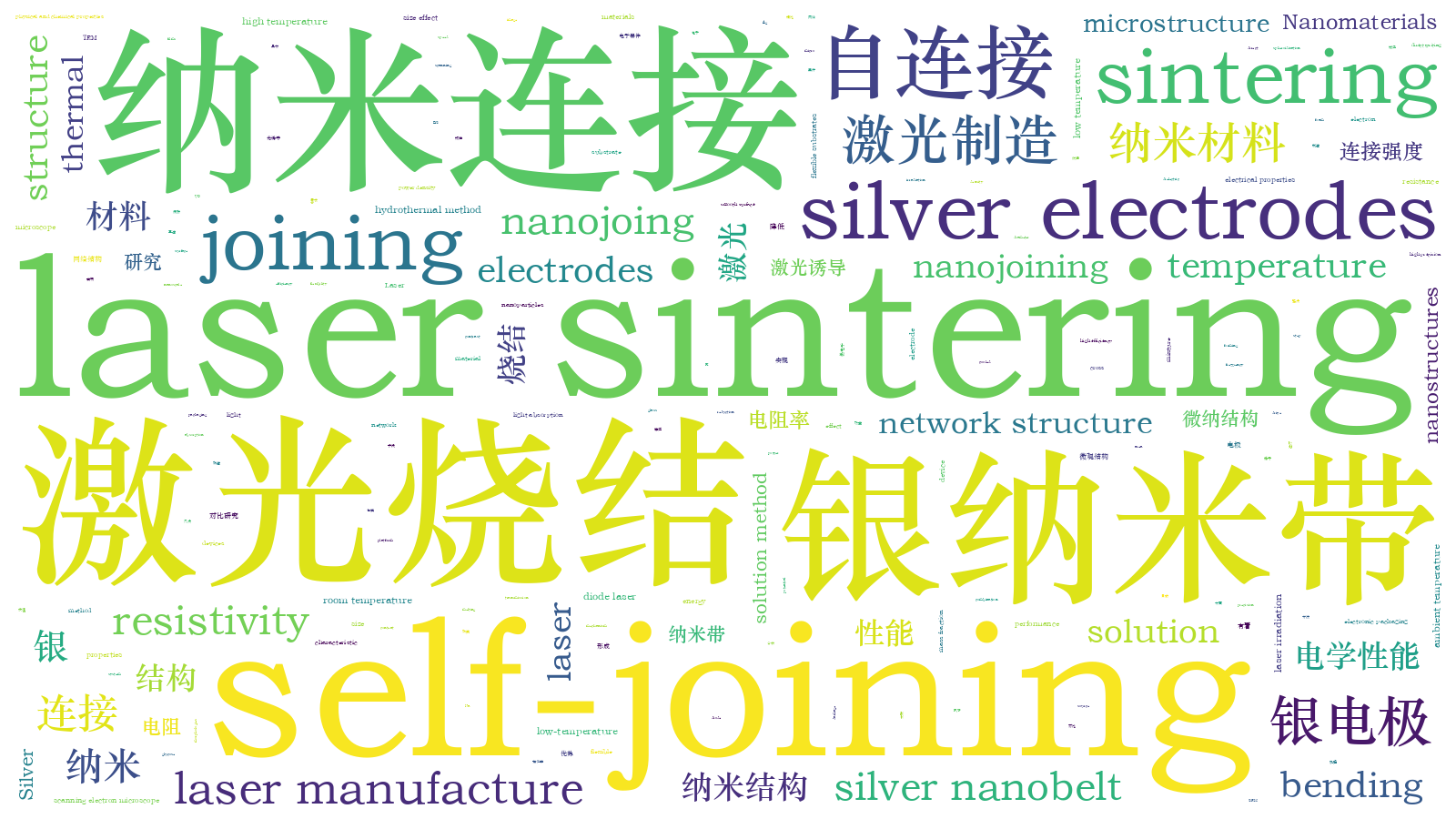银纳米材料的纳连接及其电学性能研究  下载: 1001次
下载: 1001次
Objective Owing to the increasing demand for microelectronic devices, micro-nanostructures obtained using nanomaterials have great advantages in reducing size and achieving characteristic performance. Because a structure characteristic size is reduced to the nanoscale, its light absorption, melting point, and several other physical and chemical properties are different from macroscopic bulk materials, demonstrating the unique size effect of nanomaterials. Therefore, nanojoining often requires low-energy conditions. Chemical, light, electrical, and thermal energies can be used as energy sources to achieve the low-temperature or room-temperature joining of nanomaterials. To date, the methods to achieve nanojoining mainly include self-joining, thermal sintering, and laser sintering. In this study, the performance of the abovementioned three methods in joining silver nanomaterials was evaluated. The electrical properties and microstructure of silver nanomaterials under different joining methods were compared, and the potential joining mechanism was analyzed. Laser sintering, with the advantages of high precision, high efficiency, and low damage to a substrate, is applied in flexible device preparation, dissimilar material combination device preparation, and electronic packaging.
Methods Silver nanomaterials (Ag NP) were obtained by the hydrothermal method. A mixture of 30-mL AgNO3 aqueous solution (5.1-g AgNO3) with 200-mL glucose (14 g) and PVP (8 g) aqueous solution was heated to 90 ℃ for 20 min under vigorous stirring and then naturally cooled. After the ultrasonication and centrifugation of the reaction solution, the solid matter was extracted and dried at 50 ℃ to obtain silver nanomaterials.
Silvernanobelts were synthesized by a one-step solution method at ambient temperature (~25 ℃). The aqueous solution of AgNO3 (4 mol/L,5 mL) was successively added to the aqueous solution of VC (0.25 mol/L,20 mL) and PMAA-Na (mass fraction of 30%,5 μL). The mixture was then washed using water, and the solid material was extracted after centrifugation to obtain the silver nanobelts.
Moreover, the conductive inks (solid content with mass fraction of 30%) with different quantities of silver nanobelts were prepared. Two materials, glass and PI films, were used as substrates. Electrodes were printed using a direct writing platform. Laser sintering was performed using an 808-nm diode laser with a spot diameter of 600 μm and a constant power density of 15.3 W/mm2. Their morphologies were characterized using a scanning electron microscope (SEM, Merlin Compact, Germany) and a transmission electron microscope (TEM, JEOL 2100F, Japan). Resistance of the silver structure was measured using a source meter (Keithley, 2400), and the electrode resistivity σ was calculated using σ=RS/L, where R is measured resistance, S is cross-sectional area, and L is the length of the electrodes. The 20-mm electrodes were used for bending tests using a homemade bending device. The bending frequency was 30 cycles/min, bending degree was 50%, and bending speed was 10 mm/s.
Results and Discussions Chemical energy of a reduction reaction can drive silver nanomaterials to self-join. The self-joined structure was composed of a large number of silver nanobelts with a smooth surface (
Conclusions In this study, the performance of the three methods, including self-joining, thermal sintering, and laser sintering, in the joining of silver nanomaterials was evaluated. The electrical properties and microstructure of the silver nanomaterials under different joining methods were compared. Although self-joining can promote the joining of nanoparticles at room temperature(~25 ℃), it results in a large number of dielectric substances in a system. The resistivity of the self-joined structure was 5.56×10-5 Ω·m and that of the nanobelt electrodes after thermal sintering was 5.4×10-7 Ω·m. However, the sintered structure was uncontrollable at high temperatures and not suitable for flexible substrates. In contrast, laser sintering can induce the joining of silver nanomaterials at low temperatures without destroying a substrate. Under the laser irradiation, the silver nanobelts were interconnected to form a network structure, electrode resistivity was 1.88×10-7 Ω·m, and electrode resistance change rate was 21.26% after 3000 bending cycles.
王欣达, 廖嘉宁, 姚煜, 郭伟, 康慧, 彭鹏. 银纳米材料的纳连接及其电学性能研究[J]. 中国激光, 2021, 48(8): 0802016. Xinda Wang, Jianing Liao, Yu Yao, Wei Guo, Hui Kang, Peng Peng. Nanojoining and Electrical Properties of Silver Nanomaterials[J]. Chinese Journal of Lasers, 2021, 48(8): 0802016.







